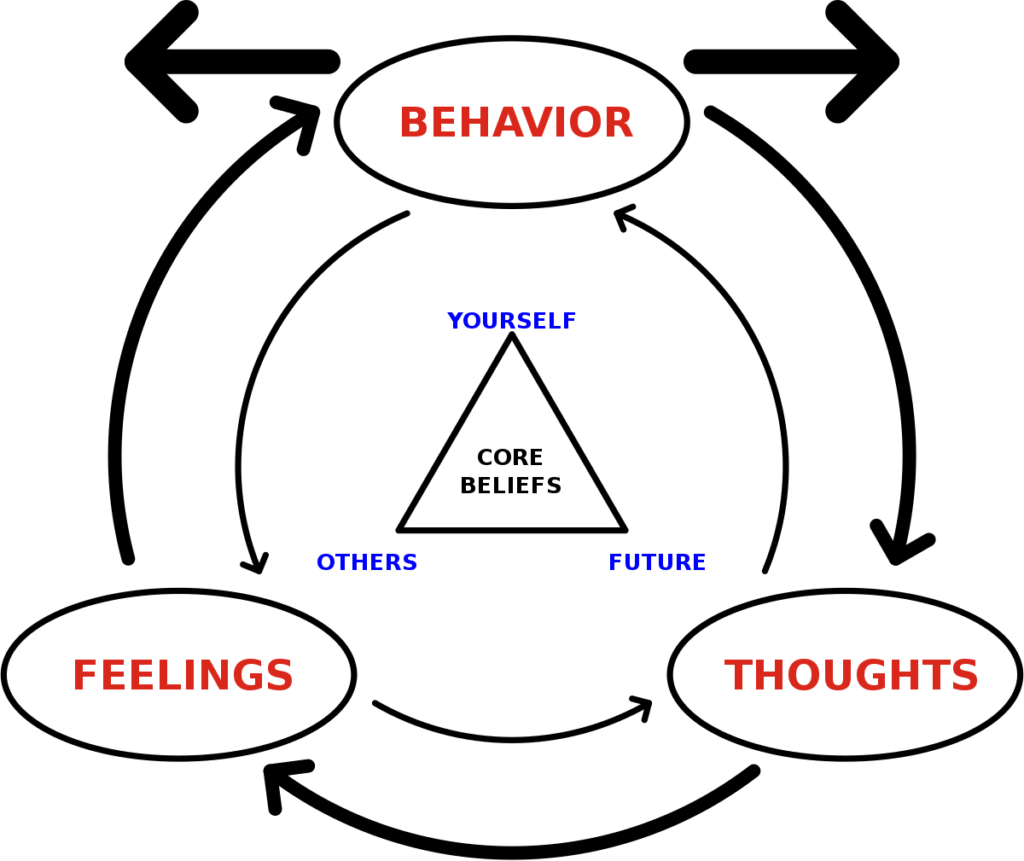This blog post is about recognizing and changing toxic behavioral patterns (patterns of behavior). It discusses the difference between healthy and unhealthy behaviors, why it’s important to understand your behavior, what makes a pattern toxic.
Further, we will discuss how to recognize these patterns in yourself or others, where to start when you’re trying to change a pattern, who can help with this process and if you run into resistance while going through the steps of changing a pattern.
Contents
- 1 What Constitutes a Pattern?
- 2 What Is The Difference Between Healthy And Unhealthy Behavioral Pattern?
- 3 How To Recognize Toxic Behavioral Patterns?
- 4 How To Change Toxic Behavioral Pattern?
- 5 Overcoming Resistance To Changing Toxic Behavioral Patterns
- 6 Talking To A Professional About Patterns Behavior
- 7 Conclusion
What Constitutes a Pattern?

A pattern is a sequence of behaviors that recur. It can be very helpful to recognize patterns because this allows you to understand the dynamics underlying your behavior, and having insight into what triggers certain responses helps you make changes for improvement (patterns behavior).
Types Of Behavior Patterns
There are different types of behavior patterns:
Habits
These are recurrent, often unconscious behaviors that we do without thinking. Examples include biting your nails, checking your phone constantly, or eating junk food every day.
Routines
Routines involve doing the same thing in the same order every time. They can be helpful because they help you feel secure and in control.
Self-defeating patterns
These are negative behaviors that cause problems in your life, like procrastinating or engaging in self-sabotaging behavior (patterns behavior).
What Is The Difference Between Healthy And Unhealthy Behavioral Pattern?
There are two aspects to this. First, behavior that is consistent with your values and goals in life is healthy while any behavior that leads you away from these things (even if it feels good) can be unhealthy/toxic.
Second, the more self-aware you become about how your patterns play out in real-time so they don’t hijack your thoughts and emotions, the healthier you will be.
So, What Is a Toxic Behavioral Pattern?
Toxic behavioral patterns are those which become maladaptive and often destructive. They are usually based on fear, low self-esteem or insecurity, and can lead to much unhappiness and chaos in our lives.
How To Recognize Toxic Behavioral Patterns?
Many signs can indicate a toxic behavior pattern. So it’s important to pay attention when certain issues seem to recur in your life over time (patterns behavior).
Signs Of Recognizing Toxic Behavioral Patterns
Some of these common signs include:
- Feeling overwhelmed,
- Stressed out or anxious much of the time;
- Having trouble relaxing or feeling calm;
- Engaging in addictive behaviors such as over-eating, drinking too much alcohol, using drugs, gambling, etc.;
- Feeling like you’re constantly “on edge” and irritable;
- Withdrawing from friends and activities you used to enjoy;
- Experiencing physical problems such as headaches, stomach aches, and chronic pain;
- Feeling unhappy most of the time
Steps To Recognize Toxic Behavioral Patterns
There are some steps you can take to help recognize when a pattern is becoming toxic.
Step 1
First, it’s important to be aware of how your behavior is affecting you. For example, if certain issues keep coming up in your life even though they’re causing problems for you (patterns behavior).
- Then it may be time to consider whether there’s a pattern developing.
Step 2
Second, pay attention to when these things happen so you can identify any patterns or triggers;
Step 3
Third, don’t be afraid to ask for help in recognizing and changing a toxic pattern – friends, family, or a therapist can all be useful resources.
NOTE: If you’re finding it difficult to change a pattern on your own, there are also programs available that can provide support (patterns behavior).
Stages Of Recognizing Toxic Behavioral Patterns
There are three stages to recognizing a toxic behavioral pattern (patterns behavior).
Stage 1
Firstly, you need to recognize that there is a problem – this can be very hard because you’re likely feeling overwhelmed by your emotions or behavior.
Stage 2
Second, you need to become aware of the pattern and what triggers it. This usually happens when you start to see a repetitive sequence of events occurring in your life.
Stage 3
Third, once you’re aware of the pattern and have identified any triggers, you need to begin taking steps to change it. This can be difficult but with support, it is possible.
Who Can Help With Recognizing Patterns?
It’s best to start by identifying the patterns of behavior in yourself. However, sometimes it can be helpful to have someone else help you identify them. A therapist or counselor could be a great resource for this. As they are trained to look for patterns and behavioral dynamics. Friends or family members might also be able to offer some insight. But it’s important that you approach them with caution and openness so that you’re not putting them in a difficult position.
How To Change Toxic Behavioral Pattern?

There are several ways you can make changes to your behavior patterns.
Identify Triggers To Behavioral Patterns
Firstly, it’s important to identify the triggers that cause a toxic pattern – these will be different for everyone but may include certain emotions or situations (patterns behavior).
- You can’t always control the things that trigger your behavior, but you should try to understand what these are and how they work (patterns behavior). This will help you know where to focus when trying to make changes.
Learn New Behavior Patterns That Are Healthy And Adaptive
Secondly, you need to learn new behavior patterns that are healthy and adaptive. This may take some time but it’s important to be patient and focus on making small changes that will have a lasting impact (patterns behavior).
- This involves coming up with specific goals for changing your behavior, as well as a timeline for achieving these goals.
Practice New Behavior Patterns In Safe Situations
Thirdly, practice the new behavior patterns in safe situations. This is a good way to begin building confidence and ensuring that the new patterns will work in more challenging situations (patterns behavior).
Change your environment
This means cutting out distractions or anything that will encourage you to continue the pattern. For instance, if eating junk food is a problem for you, it might be helpful to keep unhealthy snacks out of your house (patterns behavior).
Celebrate Success When You Change A Toxic Pattern
Lastly, you should celebrate your success when you make changes. This can be an important part of reinforcing positive change.
- Start small with something simple like taking yourself out for coffee (patterns behavior).
Overcoming Resistance To Changing Toxic Behavioral Patterns
One of the biggest challenges in changing a toxic pattern is facing resistance from within. This can come in many forms, such as:
- Feeling scared or uncertain about making changes,
- Doubting your ability to succeed, or
- Feeling like the old behavior is more comfortable than change
However, if you can work through this resistance, it will become easier over time. When faced with such challenges, there are some things you can do to help overcome them (patterns behavior).
Handy Tips
For example:
- Remind yourself of your goals and what’s important in life;
- Remind yourself that you have the tools to change;
- Identify any negative thought patterns which may be getting in your way and replace them with more positive thoughts.
- Don’t give up!
Who To Turn To?
If you’re struggling to change a toxic behavioral pattern, some people can help.
- Friends and family members can be a great support system but sometimes it’s helpful to talk to someone else who understands what you’re going through.
- Therapists are trained to help people identify and change harmful behavior patterns (patterns of behavior).
NOTE: It’s important to talk about your plans with family and friends so they can support you along the way. This may also help keep you accountable and remind you of why it’s important to change your behavior (patterns behavior).
Celebrating Success In Changing A Toxic Behavioral Pattern
When changing a toxic pattern, it’s helpful to celebrate small successes along the way (patterns behavior). This can help keep you motivated and on track.
Celebrate
Some things to celebrate may include:
- Making small changes in your behavior;
- Breaking old habits and replacing them with new, healthier ones;
- Experiencing short-term relief from symptoms related to the toxic pattern;
- Getting through a tough day or week without reverting to old behaviors;
- Receiving positive feedback from others about your progress.
NOTE: Remember, changing a toxic pattern is not easy but it’s definitely worth the effort!
Talking To A Professional About Patterns Behavior
If you feel like changing a toxic pattern is too difficult or not working, it may be worth talking to a professional (patterns behavior). A therapist can help you work through the challenges and create new strategies for success.
There are also programs available that can provide support (patterns behavior). These programs often involve working with a therapist or coach, meeting with peers who are also trying to overcome toxic behavioral patterns, and receiving ongoing support (patterns behavior).
Programs For Changing Patterns Behavior
There are many programs available to help people change toxic behavioral patterns. These programs can be a great way to get the help you need in overcoming your challenges.
Some of these programs include:
- Therapy;
- Coaching;
- Group meetings with others who are trying to overcome a similar challenge;
- Online support groups and forums
If you’re interested in finding a program like this, it’s important to do some research first.
NOTE: Remember, you have the tools within yourself to change your behavior and break free from toxic patterns! It just takes time and effort (patterns behavior).
Conclusion
Changing harmful or toxic patterns of behavior is not easy but it’s definitely worth the effort! If you’re struggling, don’t give up – some people can help. Celebrate your successes along the way and be patient with yourself – change takes time.
Now, there you have it – some steps and advice on recognizing and changing a toxic behavioral pattern. If you’re struggling with this, don’t hesitate to reach out for help. With the right support, you can succeed!
If you are looking for affordable Online Counseling MantraCare can help: Book a trial therapy session


